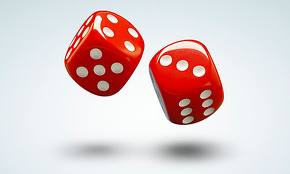
Ash Manor School
Computing Department
Control
Controling things is a programming skill which we can use to create animations using the scratch language.
Aims
Key:
- (Alg) Aim is related to Algorithms.
- (PD) Aim is related to programming and developemnt.
This is an introduction to Algorithms and Control. Using visual programming evironments (Scratch and Blockly)
By the end of this unit you will learn:
- Level 2
- (Alg) Understands that algorithms are implemented as programs
- (Alg) Designs simple algorithms using loops and selection.
- (Alg) Uses logical reasoning to predict outcomes.
- (PD) Uses arithmetic operators, if statements, and loops, within programs.
- (PD) Uses logical reasoning to predict the behaviour of programs.
- (PD) Detects and corrects simple semantic errors i.e. debugging, in programs.
- Level 3
- (Alg) Designs algorithms that use repetition and two way selection.
- (Alg) Uses diagrams to express solutions
- (Alg) uses logical reasoning to predict outputs, showing anawreness of inputs.
- (PD) Creates programs that implement algorithms to achieve given goals.
- (PD) Declares and assigns variables.
- (PD) Uses post-tested loop and a sequence of selection statements in programs, including an if, then and else statement.
- Level 4
- (Alg) Shows an awreness of tasks best completed by humans of computers.
- (Alg) Designs solutions by decomposing a problem and creates a sub-solution for each of these parts (decomposition).
- (Alg) Recognises that different solutions exist for the same problem.
- (PD) Understands the difference between, and appropriately uses if and if, then and else statements.
- (PD) Uses a variable and relational operators within a loop to govern termination.
- (PD) Designs, writes and debugs modular programs using procedures.
- (PD) Knows that a procedure can be used to hide the detail with sub-solution (Procedural abstraction).
- Level 5
- (Alg) Understands that iteration is the repetition of a process such as a loop.
- (Alg) Recognises that different algorithms exist for the same problem.
- (Alg) Represents solutions using a structured notation.
- (Alg) Can identify similarities and differences in situations and can use these to solve problems (pattern recognition).
Level 5 Programming and develoipment cannot be achieved through a graphical programming language. Level 6 Algorithms cannot be achieved using a graphical programming language.
Introduction to Programming
In this section you will work through the following puzzle - this starts off simply and ends up quite difficult. Take a screen shot of your successful program for levels 7 - 10 and paste these into a word document. Upload the word document to the moodle.
Your challenge is here You should try to complete all levels on your own.
Introduction to scratch
You have been asked to take the Project Challenge
You will need to complete each of following projects in order to pass the challenge.
Please complete the project plan for each project. Click here for project plan template
Project 1
Learning aims:

Story
Use the ‘story’ tutorial to help you to create a basic story or animation set to the words of a poem or song. You can create your own story, or use one of the ideas below:
Stories: My first day at school, Ghost story
Poems:
- http://www.poetry4kids.com/poems
- http://www.kidpub.com/story/simple-poems-26668187
- http://www.fizzyfunnyfuzzy.com/topten.php
Click here to upload your first project plan
Project 2
Learning aims:

Catch the Fruit Game
Your game could look something like this: http://scratch.mit.edu/projects/dyw/1070516
Click here to upload your second project plan
Project 3
Learning aims:

Fish Eater Game
Your game could look something like this: http://scratch.mit.edu/projects/kiosud/1054660
Click here to upload your first project plan
Click here to Self Mark your project 3
Project 4
Learning aims:
